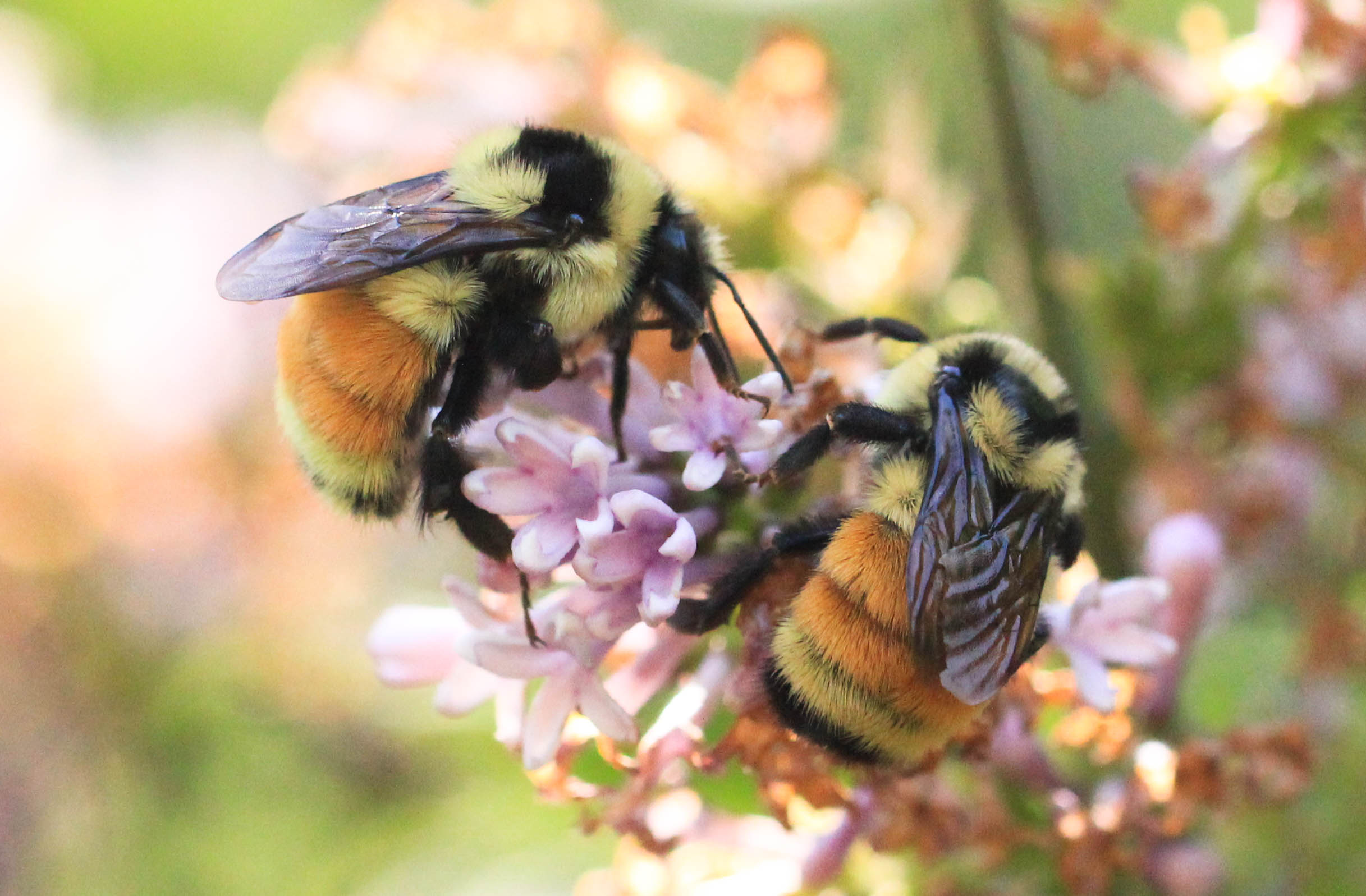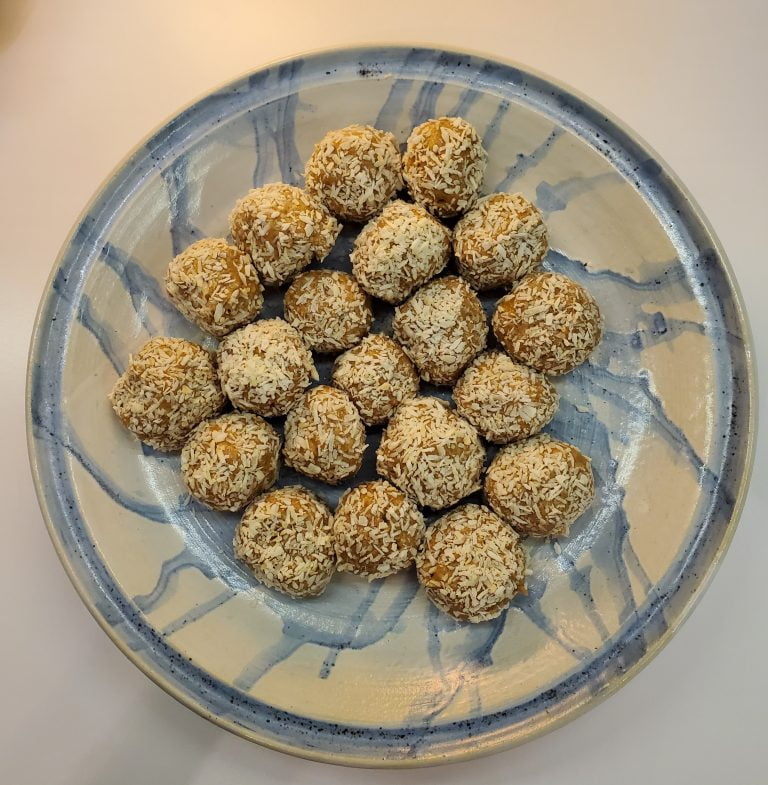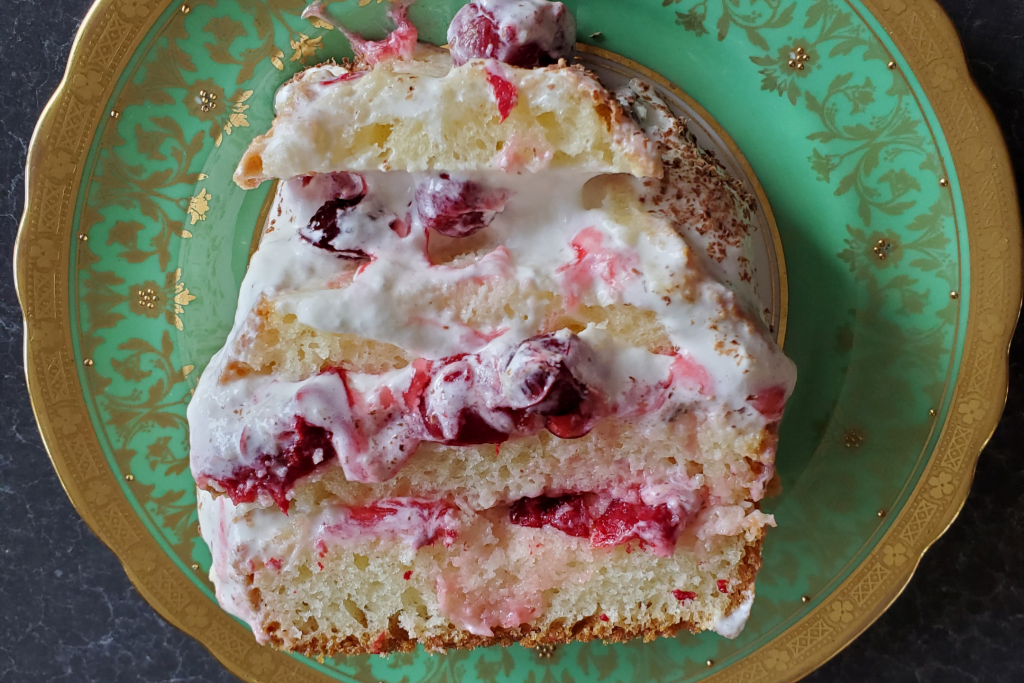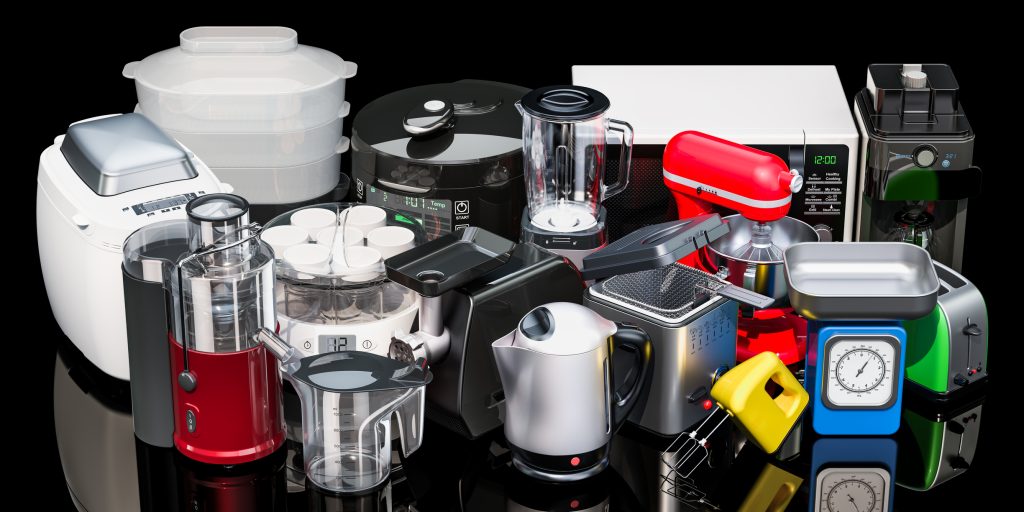Blame it on the honeycomb display at Tournebroche Bistro in Québec City. We’d spent a few days at Camping Transit RV Park in Lévis, taking advantage of their complimentary shuttle service to the ferry to the heart of the Old City and to enjoy Chef Stéphane Roth’s menu.
From that first taste, we wanted to learn more about how honey is made. We reached out to Louise Yates who with her husband Dan, run Living Sky Honey, a CFIA-registered and inspected facility in Kronau, Saskatchewan. As she explained, forager honeybees collect nectar and pollen from the flowers and bring it back to the hive. Other honeybees waiting at the hive accept the nectar from the foraging honeybees and place the nectar into wax cells. When the correct moisture level is reached, the nectar is transformed into honey and the bees cap the top of the wax cell. When enough honey is capped, the beekeeper removes the frames of honey from the hive, extracts the honey, and processes it to sell as either raw or pasteurized honey.
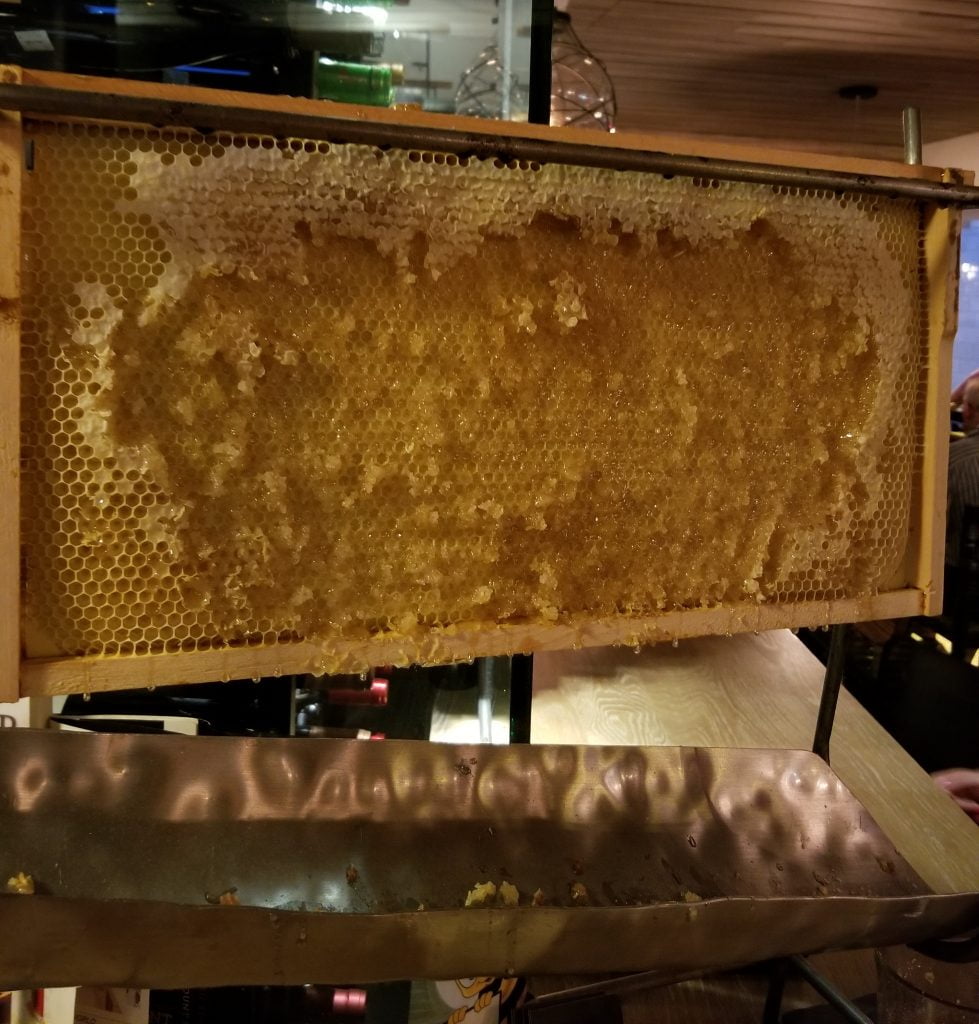
Photo credit: Tournebroche Bistro
Not all bees are the same
Did you know that the honeybees we know today are not native to North America and were introduced by early European settlers to produce honey and wax? Only honeybees make honey and they constitute less than .05% of all bee species in the world. Today, honeybees are treated as an agricultural product to both make honey and to pollinate commercial crops such as apples, cranberries, blueberries, cherries, soy, and canola.
Although it’s important to support the $2 billion honey production industry in Canada and the $17 billion (North American) additional agricultural yields from commercial pollination, it’s even more important for us to understand how critical native bees are to our ecosystem.
Without pollinators, much of the food we eat and the natural habitats we enjoy would not exist. With more than 800 native species in Canada, native bees provide the largest amount of free pollination. The National Post recently reported that native bees are responsible for one in every three bites of food at the supper table and are dying off. They’re being threatened by hotter summers, use of pesticides, loss of habitat, introduction of invasive, non-native plant species, air pollution, and diseases/parasites from imported bees. Eight native bee species are listed under Canada’s species risk registry. The rusty-patched bumble bee, the gypsy cuckoo bumble bee, and the macropis cuckoo bee have been officially granted protection because they’ve lost at least 50 percent of their total population.
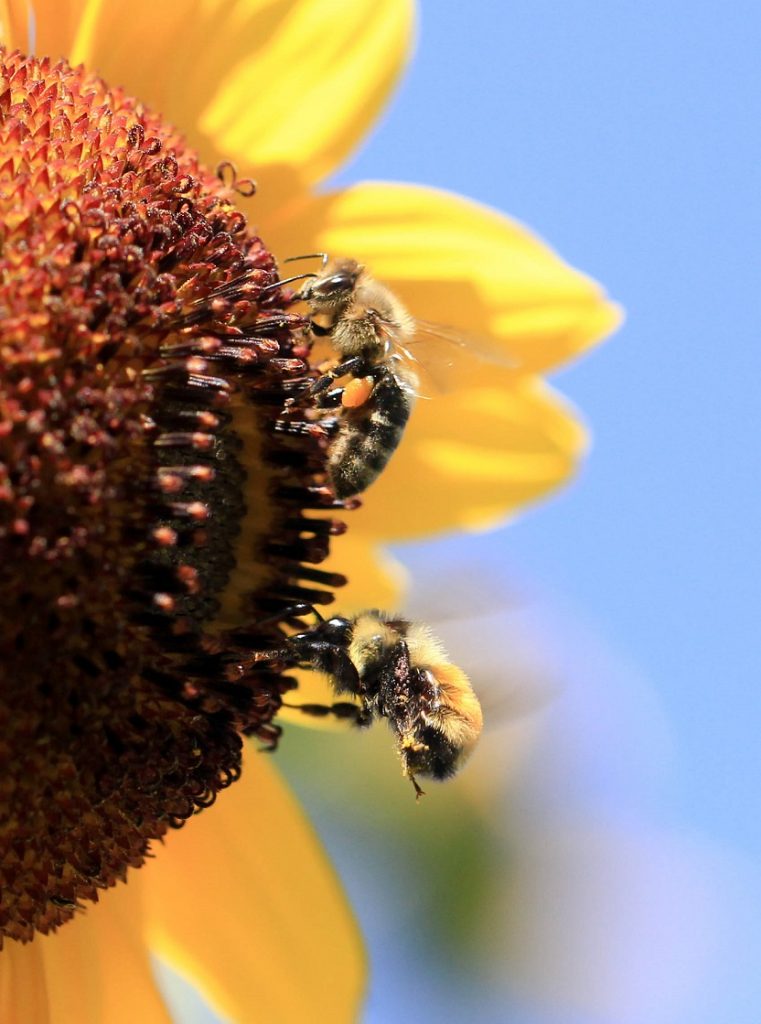
Photo credit: Louise Yates
What can we as RVers do to help our native bees?
There are many things we can do during RV season, as well as when we’re wishing it was the RV season:
- Mow your area less and let more spaces go natural
- Learn to appreciate dandelions. They’re an early-season food for bees.
- Plant non-invasive, native plants, especially those which are early and late season blooming. Early-blooming plants such as willows and late-blooming plants such as goldenrod and asters are especially important to their survival. Check your local native plant society for suggestions. But remember that a plant that is native to the Toronto area could be considered invasive to Regina (and we’re not talking politics here!)
- Provide a water source for the native bees – a shallow bowl with rocks or wine corks where the bees can land and drink
- Stop using pesticides and explore natural alternatives for pest management
- Buy Canadian, CFIA (Canadian Food Inspection Agency)-inspected (and preferably raw) honey. Some studies have shown that imported honey is adulterated with other sugars.
And when we’re in our RV’s, don’t use a bug zapper. A bee’s vision is uniquely designed to best see ultraviolet light and the glow of a bug zapper is deadly to them.
Some more factoids about honey:
- Just like wine, honey has a “terroir”, a taste unique to the location, time of year, and types of plants from which the bees collected the nectar
- Health Canada advises that we not give honey (including adding it to pacifiers, formula, milk or water) to children under one year of age as it can lead to infant botulism
- It’s normal for honey to crystallize over time. To return your honey to its liquid state, heat some water in a pot and place your (non-plastic) honey container in the pot of hot water until the slow transfer of heat from the water to the honey liquefies the honey without overheating it.
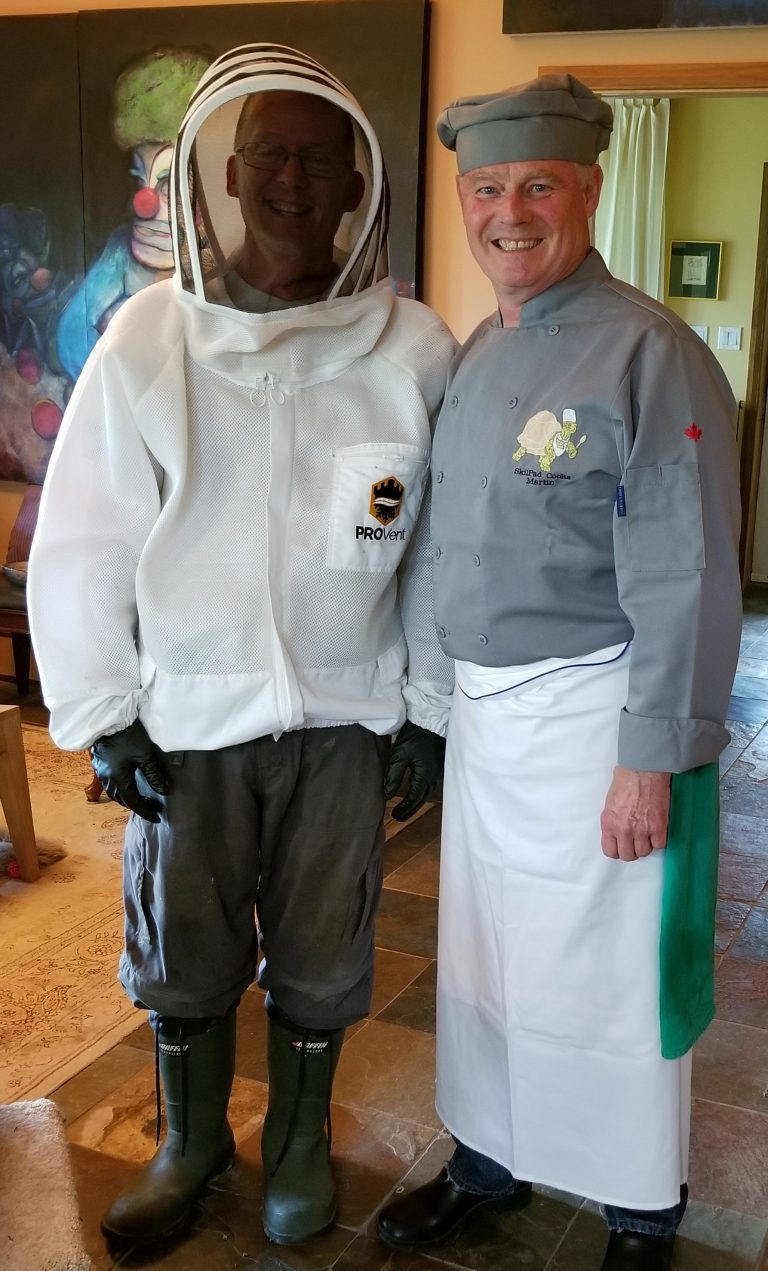
Photo credit: Living Sky Honey
Here’s a honey of a recipe we’ve adapted from Chef Tori Avey, who first learned to make these truffles at a summer day camp when she was a child. We made this batch with the honey from Kiersten and Lee, our niece and new nephew from Hardisty, Alberta who thanked their wedding guests with jars of their own honey.
Honey & Peanut Butter Truffles
Adapted from Chef Tori Avey
Makes 20 truffles and takes about 15 minutes to prepare
- 175 ml minute or quick oats (before blending)
- 250 ml natural unsweetened peanut butter (made from peanuts only)
- 125 ml honey (you can use less if you want a less-sweet flavour)
- 7 ml vanilla extract
- A pinch of salt (skip if your peanut butter contains salt)
- 70 ml dried, unsweetened, shredded coconut
- Pulse the oats in a blender for 30-45 seconds until they become a powdery oat flour
- In a mixing bowl, thoroughly combine the peanut butter, honey, vanilla, oat flour, and salt
- Roll the mixture into 2cm truffle balls
- Roll each truffle ball in the dried shredded coconut to coat
- Place the truffles in the refrigerator and allow to chill for 30 minutes
- Serve cold. If there are any left over, store the truffles in the refrigerator!
Happy culinary trails!

